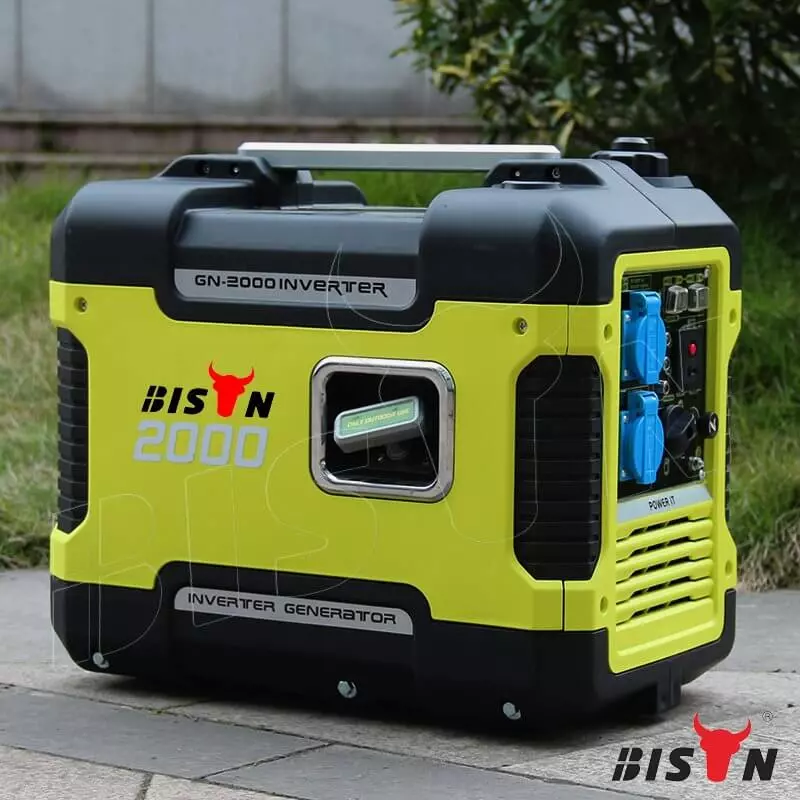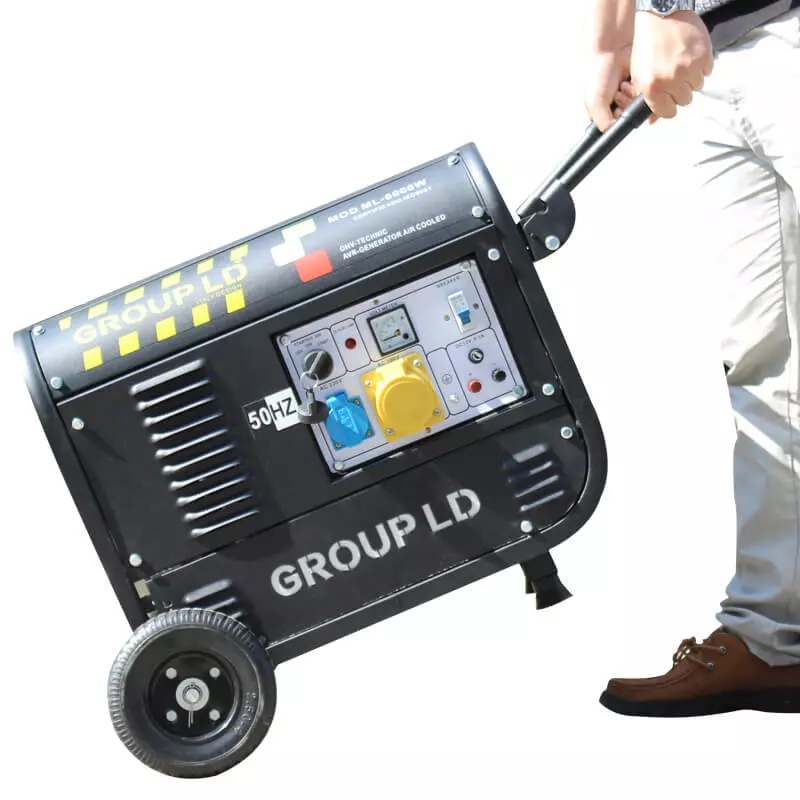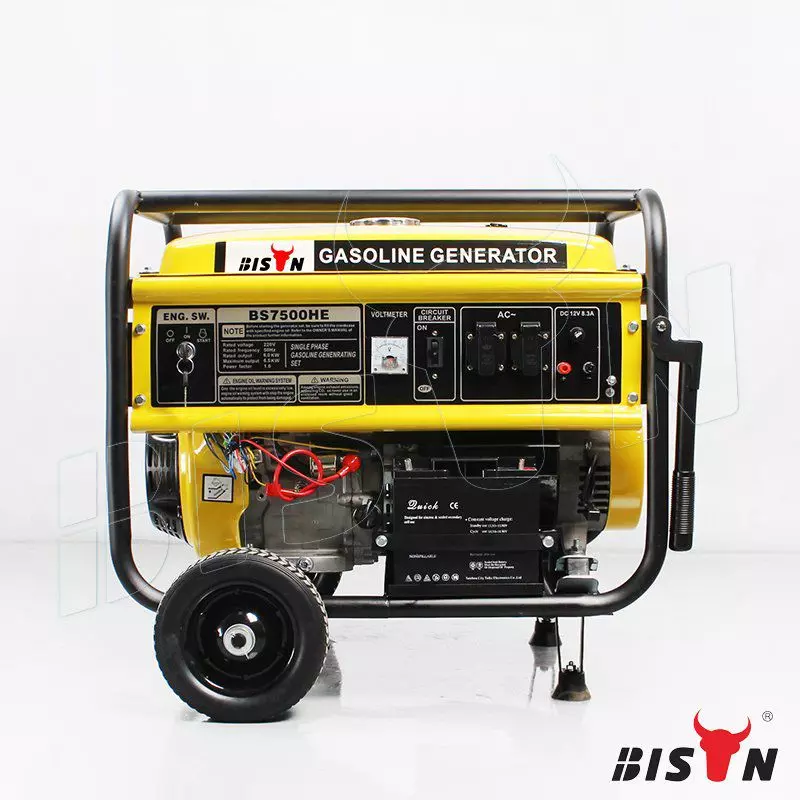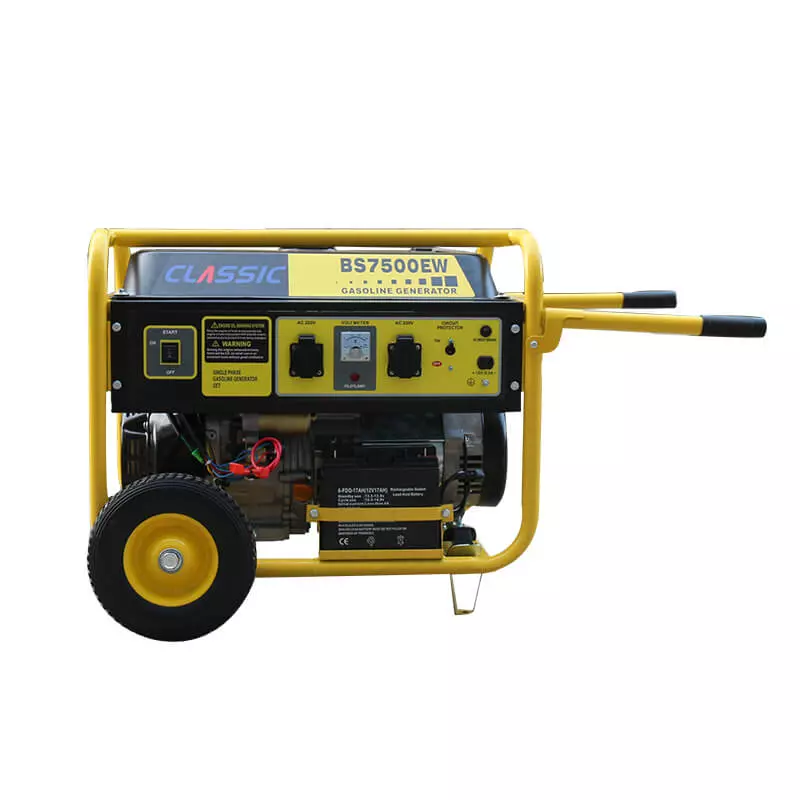air cooled vs liquid cooled generator: which one should you choose?
2024-01-17
Table of content
Generators are internal combustion engines that rotate the shaft of an alternator to generate electricity. When you have engines, you will have heat. It is inevitable. Heat is the enemy of generators as it reduces the generator's efficiency and stresses the mechanical parts. To deal with this, manufacturers use different methods to cool the generator. Two such options are air-cooled generators and liquid-cooled generators.
In this guide, we'll learn the basics of air-cooled and liquid-cooled generators, their components and their pros and cons. Next, we'll compare air-cooled and liquid-cooled generators to determine their performance, cooling, etc. BISON aim to provide you with comprehensive information and a clear direction to make an informed decision when choosing the ideal generator for your needs.
air-cooled generators
Air-cooled generator is a type of generator that uses air as a cooling medium to dissipate the heat generated during operation. This type of design is prevalent in portable and standby generators. It usually consists of fans, fins, and other components that help dissipate the heat generated by the engine and generator components.
Air-cooled generators typically use fans to circulate air over the generator components, including the stator, rotor, and other internal components. Air is usually drawn in through vents on the generator housing and exhausted through openings on the other side.
Components of air-cooled generators
Air-cooled generators have several main components that work together to produce electricity. Here are some essential components of an air-cooled generator.
An internal combustion engine is a primary component that drives the generator. It usually runs on diesel fuel or gasoline and provides mechanical energy to rotate the generator's rotor.
Next, we have the alternator, which converts the engine's rotational energy into electrical energy. A voltage regulator is a component that maintains a constant voltage output from a generator. It regulates the amount of current flowing through the generator's electrical system.
Next, we have the cooling system. The air cooling system is essential to prevent the generator from overheating and damaging its components.
The control panel is the interface between the generator and the operator. It typically includes controls for starting and stopping the generator, monitoring engine and generator performance and adjusting output voltage and frequency.
These are some of the main parts of an air-cooled generator; however, the exact parts may differ based on the generator's model and maker.
Advantages of air-cooled generators
Cost-effectiveness: Air-cooled generators are generally less expensive than water-cooled generators. Their overall simpler design and lack of complex cooling equipment help reduce manufacturing costs, making them a more cost-effective option for many applications.
Easy to maintain: the overall design involves fewer parts making the air-cooled generator more convenient and easy to maintain. The elimination of regular coolant checks and changes, in addition to basic maintenance related to engine cleanliness, fuel and air filter condition. This feature is particularly attractive to those looking for a low-maintenance backup power solution.
Compact size: Air-cooled generators do not need to accommodate coolant reservoirs or circulation ducts, making them smaller and lighter than liquid-cooled generators - a boon when space is limited. And make them easier to transport and store.
Simplicity: The reduced number of components in a build reduces potential points of failure, thereby reducing the likelihood of generator failure, making them more reliable, and repairable.
Disadvantages of air-cooled generators
Limited power output: Air-cooled generators are generally less efficient than water-cooled generators, which can result in lower power output and higher fuel consumption. Because air cooling systems is less effective at handling the greater heat output produced by larger engines.
Noise during operation: Air-cooled generators are louder than water-cooled ones because of the fan circulating air over the generator components. This can be a significant disadvantage in residential or noise-sensitive environments where tranquillity is a priority.
Higher operating temperature: In hotter or enclosed environments, air cooling may not be sufficient to keep the generator within the optimal temperature range.
Not well-suitable for continuous use: The tendency of these generators to run hotter makes them less suitable for continuous or high-load use.
Lifetime: High operating temperatures in air-cooled generators can reduce component life, especially in heavy-duty applications.
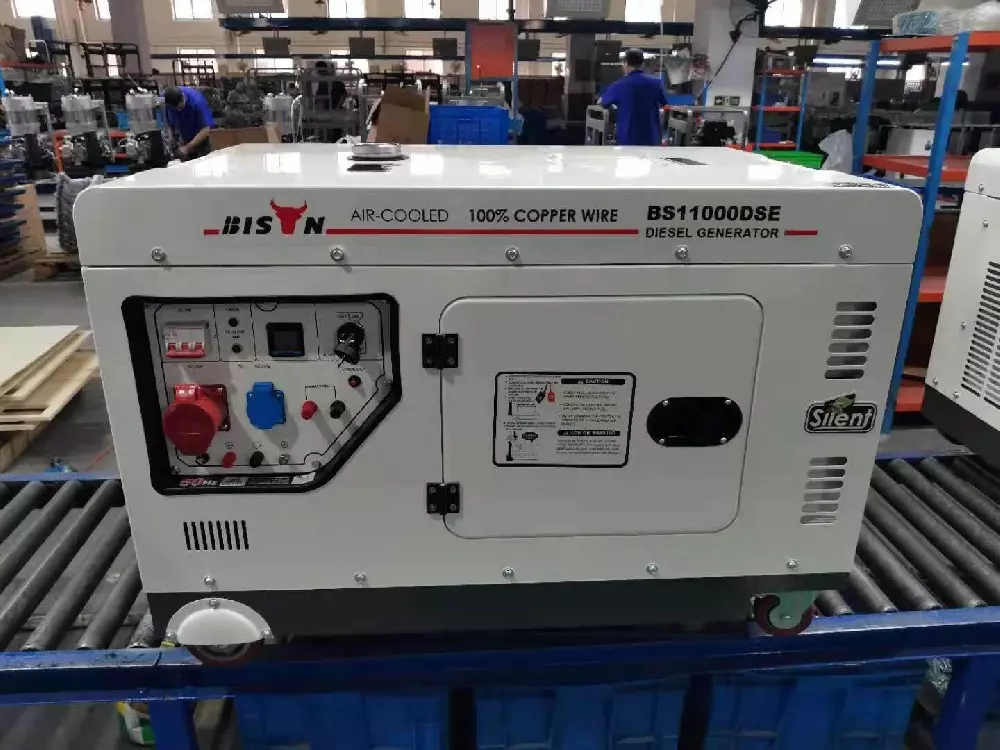
liquid-cooled generators/water-cooled generators
Liquid-cooled generators use more complex systems to manage and dissipate the heat generated during power generation. A liquid is a cooling medium in a liquid-cooled generator. Typically, this liquid is water or a mixture of water and antifreeze.
Liquid-cooled generators typically use a radiator and coolant pump to circulate liquid over the generator components, including the engine, alternator, and other internal components.The fluid absorbs heat from the generator and conducts it to the radiator, dissipating it into the air. The cooled fluid is then recirculated back to the engine, thus continuing the cycle.
Liquid-cooled generators are suitable for various commercial, industrial, and residential applications.
Components of liquid-cooled generators
Like air-cooled generators, an internal combustion engine is the primary component that drives a liquid-cooled generator. It usually runs on gasoline, diesel fuel, or natural gas and provides mechanical energy to rotate the generator's rotor.
To circulate the coolant, you need a pump. To help maintain operating temperatures, the coolant pump is in charge of pumping liquid coolant through the engine and generator components.
The coolant reservoir is the storage tank for the coolant. This enables the coolant to expand and contract as it heats and cools, helping to maintain a steady degree of cooling in the system. Heat exchangers in large liquid-cooled generators help increase cooling efficiency.
The engine's mechanical energy must be transformed into electrical energy via the alternator. It is usually located on the same shaft as the engine and rotates alongside it. Liquid-cooled generators also have regular components like voltage regulators, control panels, etc.
advantages of liquid-cooled generators
Higher power output: Mainly due to their superior cooling capabilities, liquid-cooled generators can handle higher loads.
Quieter: The ability of the liquid coolant to quietly absorb and transfer heat, combined with the quiet hum of the circulation pump and the enclosed nature of the radiator, make these generators much quieter than air-cooled versions.
Superior cooling: Using liquid as the coolant allows for more efficient and reliable cooling. It helps maintain consistent engine temperatures even in hot or enclosed environments, reducing wear and tear on generator components and extending its lifespan.
disadvantages of liquid-cooled generators
Higher cost: Liquid-cooled generators are generally more expensive than air-cooled generators. The complexity of the design and the inclusion of additional components such as radiators, water pumps and coolant all increase the cost of manufacturing.
Increased maintenance: These generators require more maintenance than air-cooled generators, including regular coolant changes and inspections of the coolant pump, radiator, and other components. Radiators must also be cleaned from time to time to avoid corrosion or blockage.
Larger and heavier: The addition of coolant, associated pipes, pumps and radiators results in greater overall size and weight.
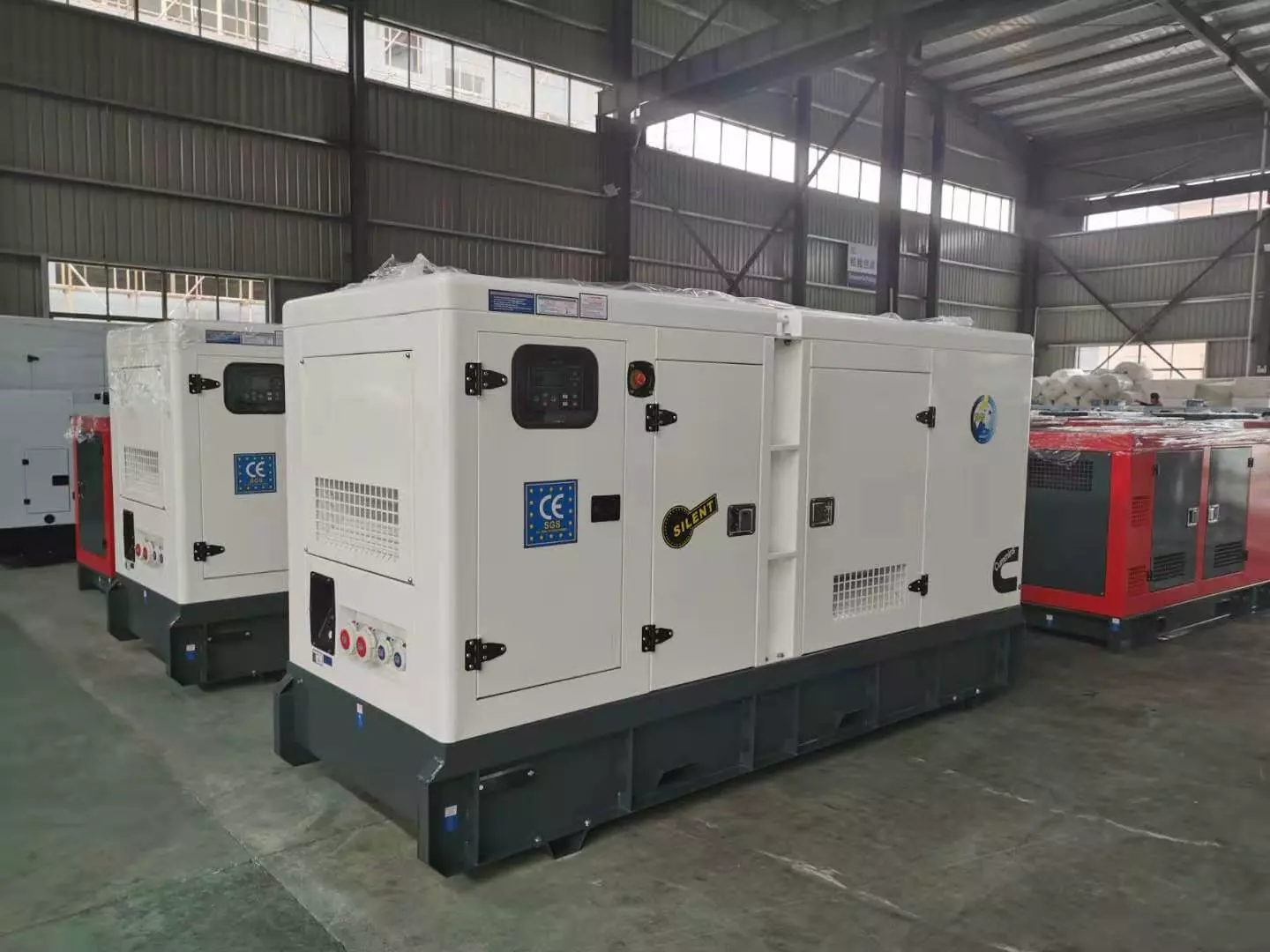
Air-cooled vs liquid-cooled generator
| Air-cooled generators | Liquid-cooled generators | |
| Cooling | Uses fans to circulate air | Uses liquid to dissipate heat |
| Efficient | Less efficient | More efficient, higher power output, lower fuel consumption |
| Lifetime | Shorter lifespan | Longer lifespan due to stable operating temperatures |
| Ability | Handles lower loads | Can handle higher loads |
| Costs | Generally cheaper | More expensive due to complex cooling system |
| maintain | Requires less maintenance | Requires regular coolant changes and inspections |
| Noise | Louder due to the use of fans | Quieter |
| Portability | More portable due to smaller size and straightforward design | Less portable due to larger size and complexity |
Which should you choose, an air-cooled or liquid-cooled generator?
Choosing between air-cooled and liquid-cooled generators depends on the specific needs of your application. Here are some key factors to consider when choosing between air-cooled and liquid-cooled generators:
intended use: Will the generator be used primarily for backup power during utility outages, or as primary power source (perhaps in an off-grid location)? If you plan to run the generator briefly, an air-cooled generator may be sufficient. However, plan to use the generator for long periods or continuous operation. A liquid-cooled generator may be more suitable due to its stable operating temperature.
Environmental Issues: If you are located in an area prone to dust or debris, your air-cooled generator will require more regular cleaning, as these elements may clog the fins. Alternatively, if your generator is likely to be exposed to colder conditions for extended periods, an engine heater may be needed in a liquid-cooled generator to prevent the coolant from freezing.
Climate and ambient temperature: The climate and temperature of the location where the generator is installed play a vital role. If you're in an area with warmer temperatures, liquid cooling systems can provide more efficient and reliable operation. Air-cooled systems, on the other hand, are adequate for cooler climates and lighter power demands.
Installation space: Air-cooled generators are smaller and more compact, making them more suitable for applications where space is limited. Liquid-cooled generators require more space due to their more complex cooling systems.
Power requirements: Carefully consider your power requirements. Smaller homes or applications with lower power demands can often use air-cooled generators. A liquid-cooled generator may be a better option if you need more power output and handle larger loads.
Budget: Cost considerations include upfront purchase, installation, operating (fuel) and long-term maintenance costs. Air-cooled generators are generally less expensive than liquid-cooled generators, making them a more attractive option for those on a tight budget.
Noise tolerance: In residential areas or noise-sensitive locations, liquid-cooled generators are often preferred for quieter operation.
in conclusion
In this article, BISON take an in-depth look at the working principles, advantages, and disadvantages of air-cooled and liquid-cooled generators, two very different yet crucial technologies operating in the generator world. Both have their own unique advantages and challenges, making them suitable for different applications and environments.
Air-cooled generators have a simple and compact design, making them ideal for home backup power, occasional use, and portable applications, and providing a cost-effective solution for budget-conscious buyers.
Liquid-cooled generators, on the other hand, demonstrate their advantages in high power demand scenarios, continuous operation, and commercial or industrial applications due to higher power output, quieter operation, and superior cooling efficiency.
Essentially, the choice between air-cooled and liquid-cooled generators fundamentally depends on the user’s unique needs, operating environment, and environment.
If you are considering which generator to choose for your unique project or need more information about the intricacies of your power solution, BISON is ready to provide you with professional guidance. With our extensive experience in generator manufacturing, we can provide tailor-made advice and solutions to ensure your power needs are met reliably, efficiently and cost-effectively. Contact us today to take the first step toward getting your ideal power solution.

